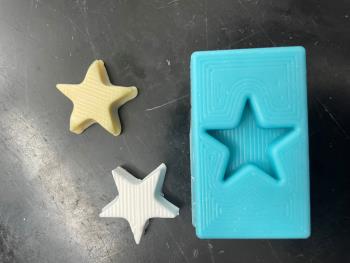Weeks 13 Students A¶
Jed, Merrit, Ryan, Griffin, and Adam
Material Safety Review- Ryan¶
Ryan reviewed two molding materials and the Smooth-On Smooth Cast 65 D casting product.
Mold Star 16D¶
Pot life: 6 minutes Cure time:30 mins
Features: - tear resistanct - good for wax, gypsum, resins is super heat resistance(up to 450 degrees F) - NOT intended for brush-on molding
Safety features include wearing goggles, long sleeves, gloves, and minimize touching. Don’t wear latex gloves, for they inhibit cure of rubber. Should be used at room temperature(aronud 73 F)
Mold Star Silicones don’t cure against surface containing sulfur.
For more features: here
Mold Star 20T¶
- 20A translucent platinum silicone
- low viscosity
- pot life and cure time same as Mold Star 16D
- Exhibits very low long term shrinkage/tear resistant
- heat resistance up to 450 degrees F
- Certified skin safe
- won’t cure against sulfur
- use in ventilated area and avoid contamination with gloves(NO LATEX GLOVES)
Fore more information : here
Smooth Cast 65 D¶
Features:
- usable for rotataional casting applications.
- must be stored in warm 73 degrees. They have limited shelf life, so shouldn’t be used after being stored for too long. Best to be used immediately.
- Mixing should be done in ventilated area
- Moisture sensitive, and will absorb atmospheric moisture
- Fast, so no delay between mixing and pouring
- use product with at least room size ventilation or in proximity to a forced outlet air vent and do not inhale/breath fumes
- hot to touch, may irritate skin
For more information: here
Task 8 Plastic¶
The features for thsi cast material were mostly the same as the Smooth Cast. However, we notcied that it stated a release agent is necessary to faciliate demolding. However, for rubber silicone material which was what we were using, we didn’t. The saftey were the same, with the glasses, gloves, and room temperature. Also, it was reccomended to pour in one spot at the lowest point. For more information, you can navigate here where we were able to learn some features.
Soft Star Mold Cast - Adam¶
I mixed 30ml Part A and 30ml Part B together and mixed them for ~30sec. I then let it sit for ~30min and it came out very well!
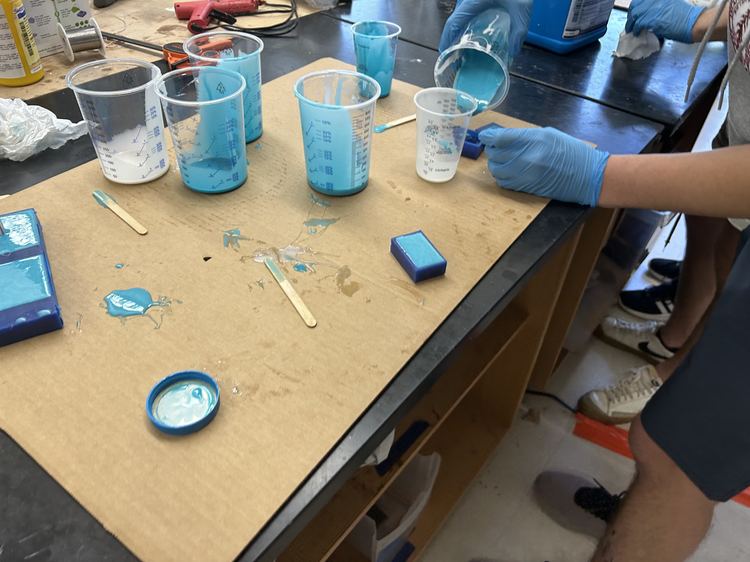
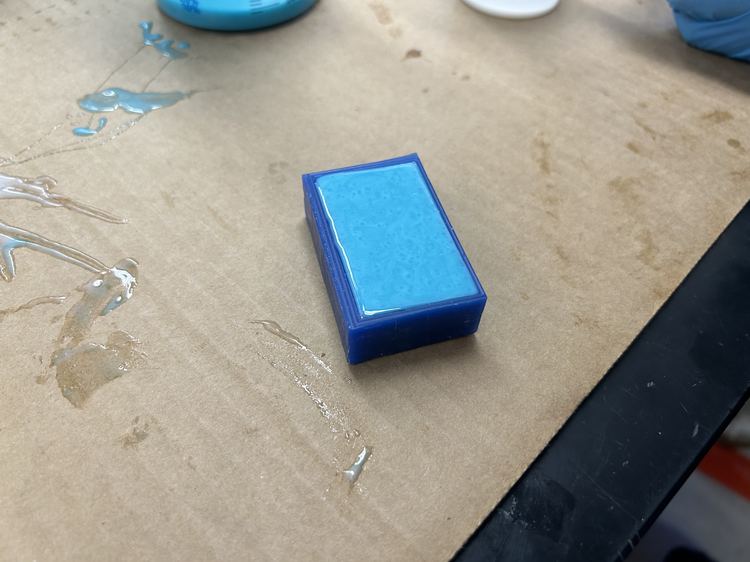
![]()
Smooth Cast 65D- Merritt, Jed, Griffin¶
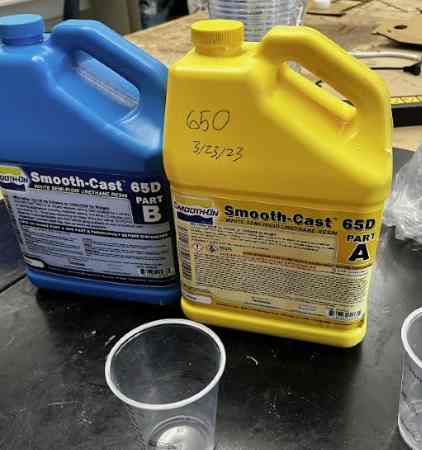
We didn’t know exacly how much Soomth Cast to use and at the time we didn’t think about using water to check the volume even though we did that earlier to know much Soft Star Mold Cast to create the mold so we just eyeballed it(not the best idea but it worked for us). We mixed to much and Merritt poured to much, but besides that it came out well.
This what the star looks after taking it out of the mold:
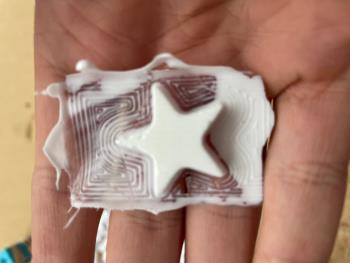
This is what it looks like weeded( I don’t know if thats the right term but it was the same process):
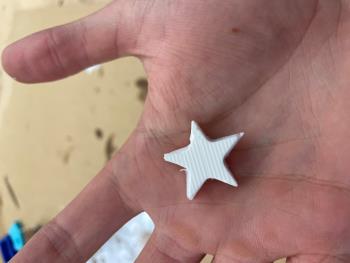
Task 8 Cast Test- Griffin, Ryan, Jed¶
We decided to use the test cut to compare the two casts. After reading the information about pot life and cure life, we noted that this material was similar and had short pot life, so we quickly mixed a 1:1 ratio and poured the material into the silicone mold. We noticed it was quite hot, and the color turned from a yellow to a more white state.
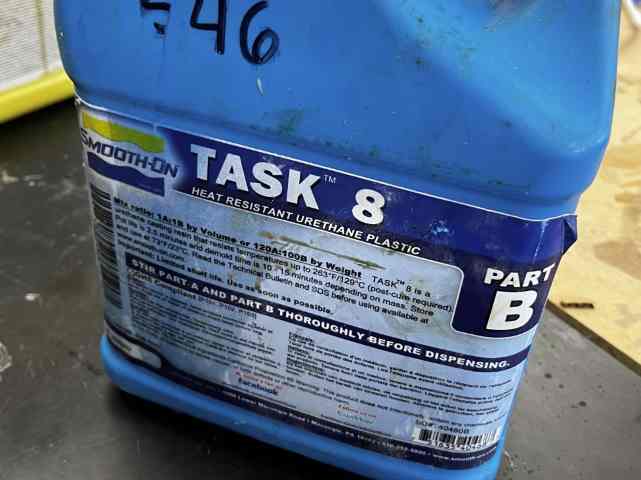
For this one we again eyeballed how much Task 8 to us and we were a lot more accurate this time around. When Jed poured it into the mold he didn’t pour to much so we didn’t have to worry about that. Then we waited 15 minutes and took it out of the mold. You can see it in this image that the Task 8 stayed a yellow tint of white and was a little malleable. Heres what the star looked like out side of the mold:
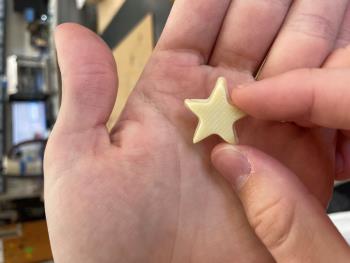
Final¶
After milling a mold with machinable wax, creating a mold with that wax with Soft Star Mold Cast, casting with Smooth Cast 65D, casting again with Task 8. This is what we ended with:
